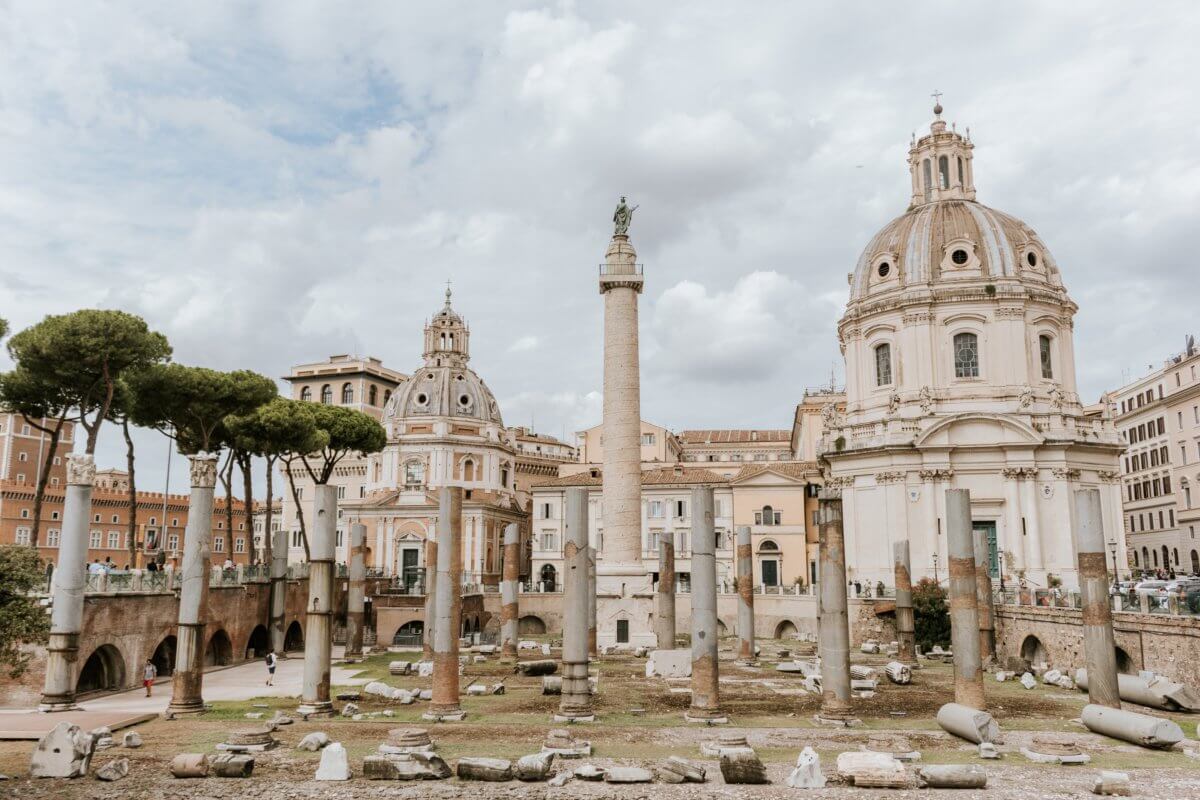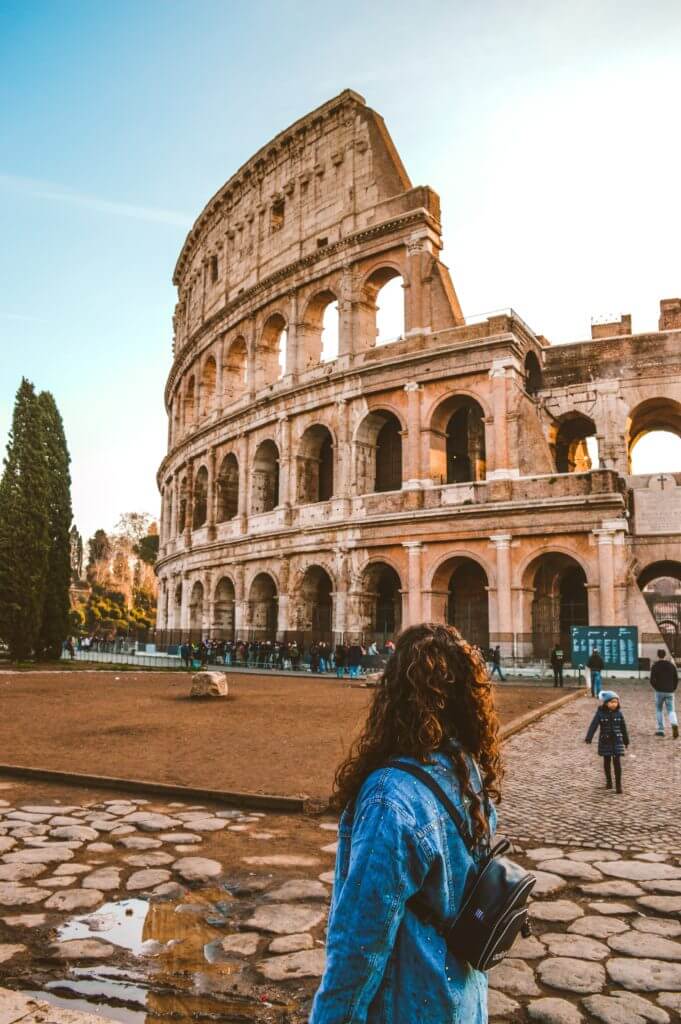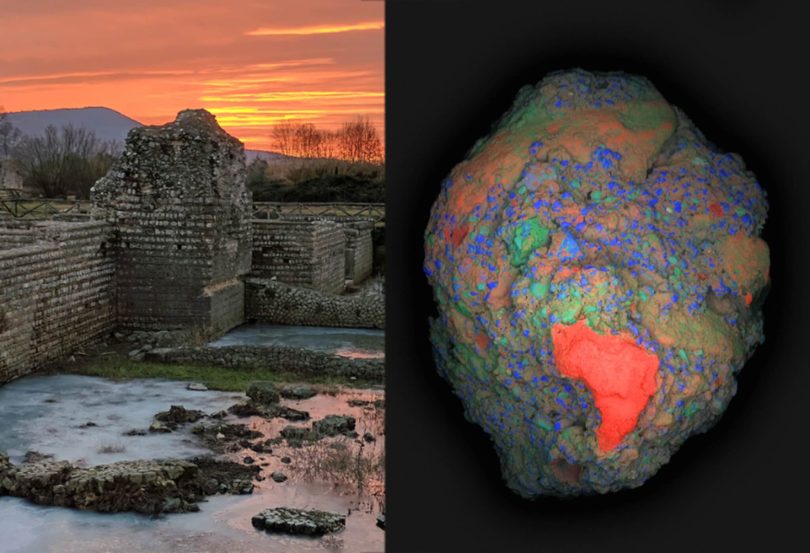[ad_1]
CAMBRIDGE, Mass. — The secret to the durability of Roman concrete — which has stood the test of time for over 2,000 years — has finally been unearthed.
Scientists from MIT have isolated the ingredient that allows Roman concrete to “self-heal,” making it stronger than its modern equivalent. Their “back to the future” findings could help reduce the environmental impact of cement production in today’s society.
The ancient Romans were masters of engineering, building a huge network of roads, aqueducts, ports, and temples — many of which still stand to this very day! Many of these structures were built with concrete, including Rome’s Pantheon, which has the world’s largest unreinforced concrete dome and is still intact despite being dedicated in the year 128 AD. Some ancient Roman aqueducts still deliver water to the Eternal City today, while many modern concrete structures crumble after just a few decades.
Scientists have spent decades trying to figure out the secret of the “ultra-durable” construction material, particularly in structures that endured especially harsh conditions — such as docks, sewers, and seawalls.

Now, an international team has discovered ancient concrete-manufacturing techniques that incorporated several key “self-healing” properties. For years, researchers believed the key to the ancient concrete’s durability was one ingredient: pozzolanic material, such as volcanic ash from the area of Pozzuoli, on the Bay of Naples.
White chunks in ancient concrete were not a sign of sloppiness
Historians say this specific kind of ash was shipped all across the Roman empire for use in construction projects, being described as a key ingredient for concrete at the time. After closer examination, these ancient samples also contain small, distinctive, millimeter-scale bright white mineral features. They were common component of Roman concretes. The white chunks — often called “lime clasts” — come from lime, another key ingredient in ancient concrete mix.
“Ever since I first began working with ancient Roman concrete, I’ve always been fascinated by these features,” says MIT professor of civil and environmental engineering Admir Masic in a university release.
“These are not found in modern concrete formulations, so why are they present in these ancient materials?”

Although previous studies have disregarded these features as a sign of sloppy mixing practices, or poor-quality raw materials, the new study theorizes that the tiny lime clasts gave the concrete its self-healing capability.
“The idea that the presence of these lime clasts was simply attributed to low quality control always bothered me,” says Masic. “If the Romans put so much effort into making an outstanding construction material, following all of the detailed recipes that had been optimized over the course of many centuries, why would they put so little effort into ensuring the production of a well-mixed final product? There has to be more to this story.”
‘Hot mixing’ is the key
Using high-resolution multiscale imaging and chemical mapping techniques pioneered in Prof. Masic’s lab, the researchers gained new insights into the lime clasts. Historically, scientists assumed that when Romans added lime into concrete, they first combined it with water to form a highly reactive paste-like substance — a process called slaking.
However, Prof. Masic says the process alone could not account for the presence of the lime clasts. The study author wondered if it was possible that the Romans actually used lime directly in its more reactive form, known as quicklime.
Studying samples of the ancient concrete, MIT researchers determined that the white substances were made out of various forms of calcium carbonate. Further analysis provided clues that they had been formed by extreme temperatures. This would be the expected result of an exothermic reaction produced by using quicklime instead of the slaked lime in the concrete mixture.
The research team now believes that “hot mixing” was the real key to the concrete’s super-durable nature.

“The benefits of hot mixing are twofold,” Masic explains. “First, when the overall concrete is heated to high temperatures, it allows chemistries that are not possible if you only used slaked lime, producing high-temperature-associated compounds that would not otherwise form.”
“Second, this increased temperature significantly reduces curing and setting times since all the reactions are accelerated, allowing for much faster construction.”
Ancient methods outperformed modern ones
Masic adds that, during the hot mixing process, lime clasts develop a characteristically brittle nanoparticulate architecture. This creates an easily fractured and reactive calcium source, which could provide a “critical” self-healing ability for building materials. As soon as tiny cracks start to form within the concrete, they can preferentially travel through the high-surface-area lime clasts.
Prof. Masic explains that the material can then react with water, creating a calcium-saturated solution. It then recrystallizes as calcium carbonate and quickly fills the crack, or reacts with pozzolanic materials to further strengthen the material.
Researchers note that these reactions take place spontaneously and therefore automatically heal the cracks before they spread. The team produced samples of hot-mixed concrete that incorporated both ancient and modern formulations. They then deliberately cracked them and let water run through the cracks.
Within two weeks, the cracks completely “healed,” and the water could no longer flow. An identical chunk of concrete made without quicklime never healed, and the water just kept flowing through the sample. As a result of the successful tests, the team is working to commercialize the modified cement material.
“It’s exciting to think about how these more durable concrete formulations could expand not only the service life of these materials, but also how it could improve the durability of 3D-printed concrete formulations,” Masic concludes.
Masic hopes the team’s findings, published in the journal Science Advances, could help reduce the environmental impact of cement production, which currently accounts for about eight percent of global greenhouse gas emissions.
South West News Service writer Stephen Beech contributed to this report.

[ad_2]
Source link








